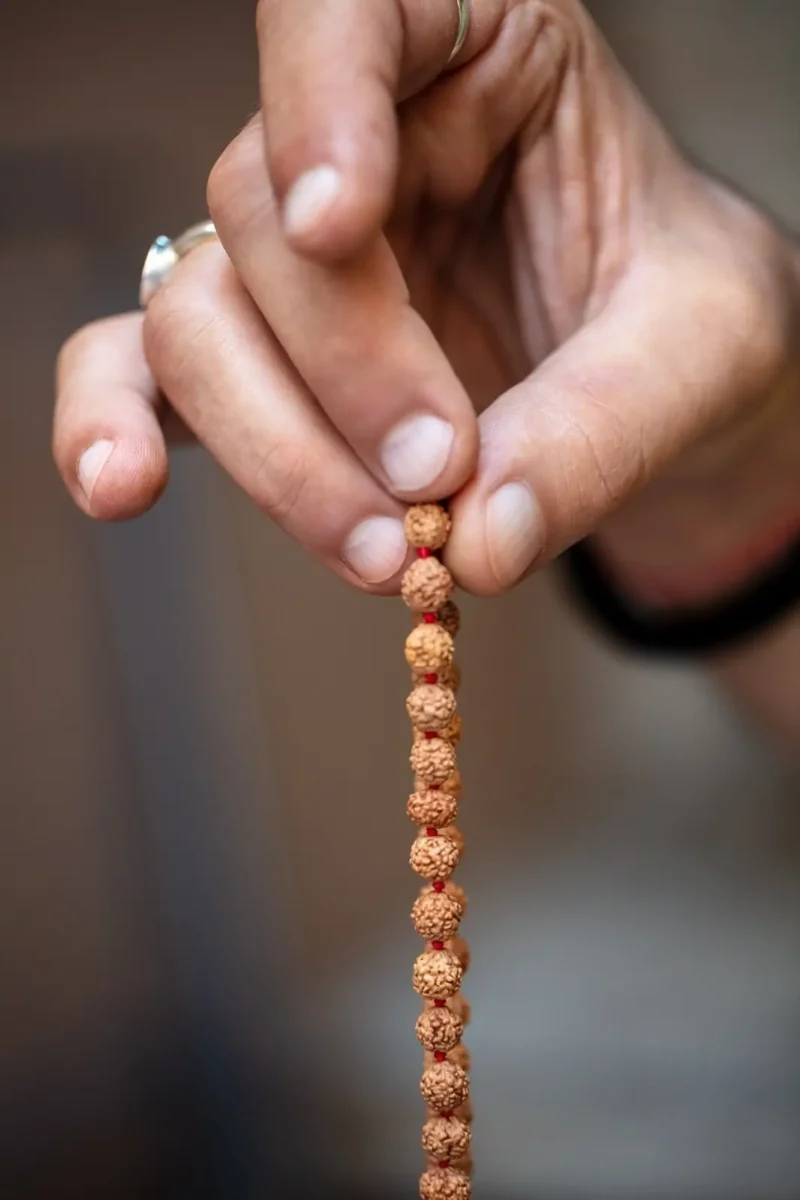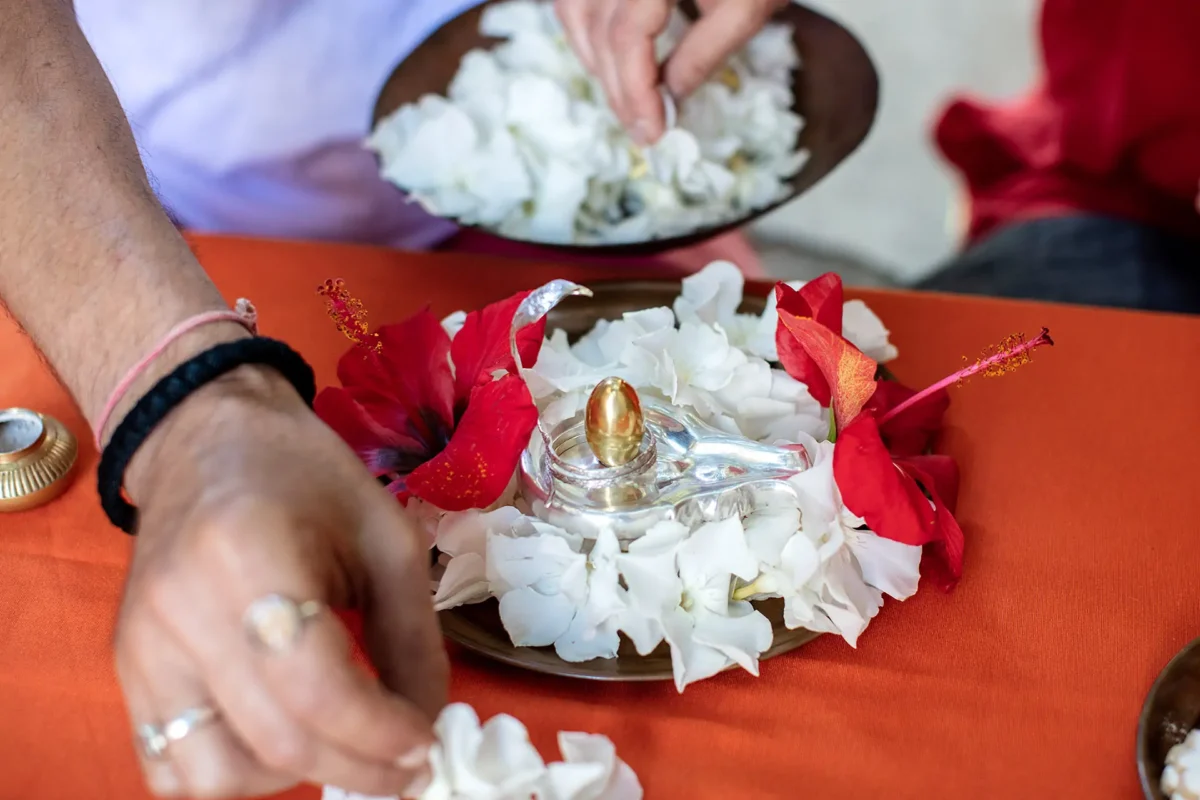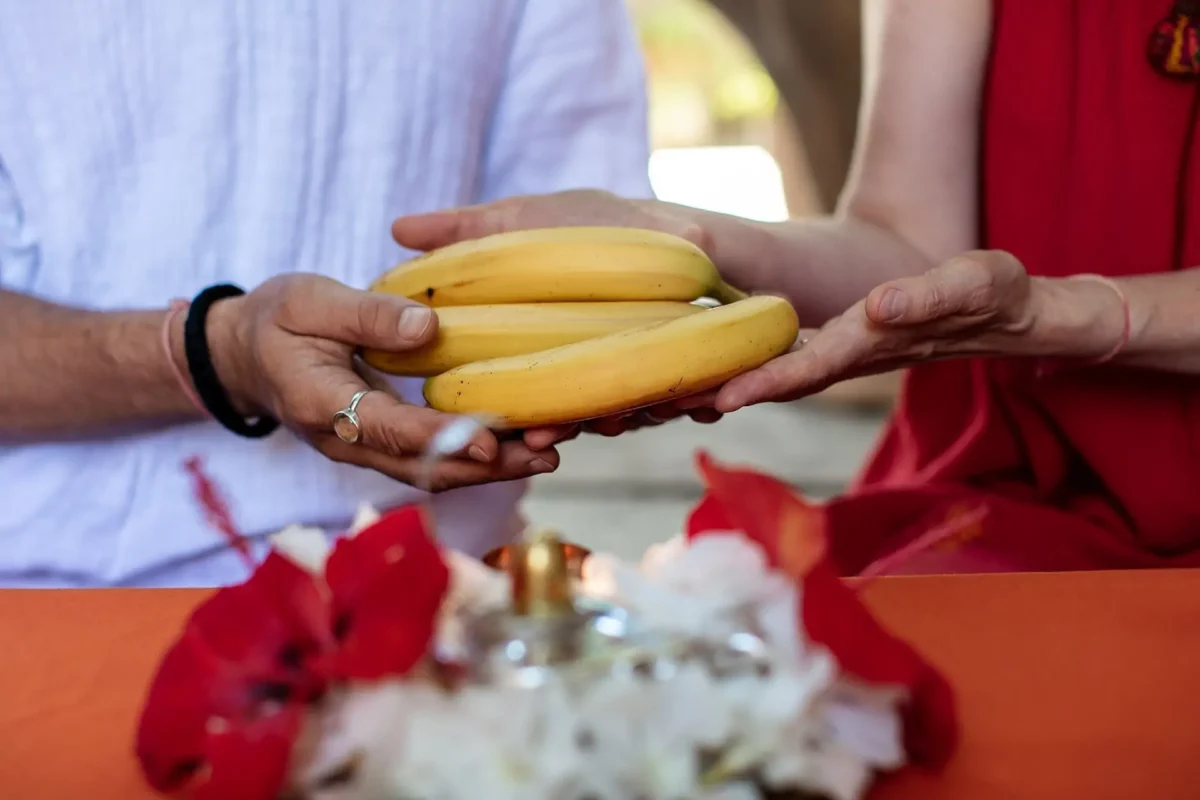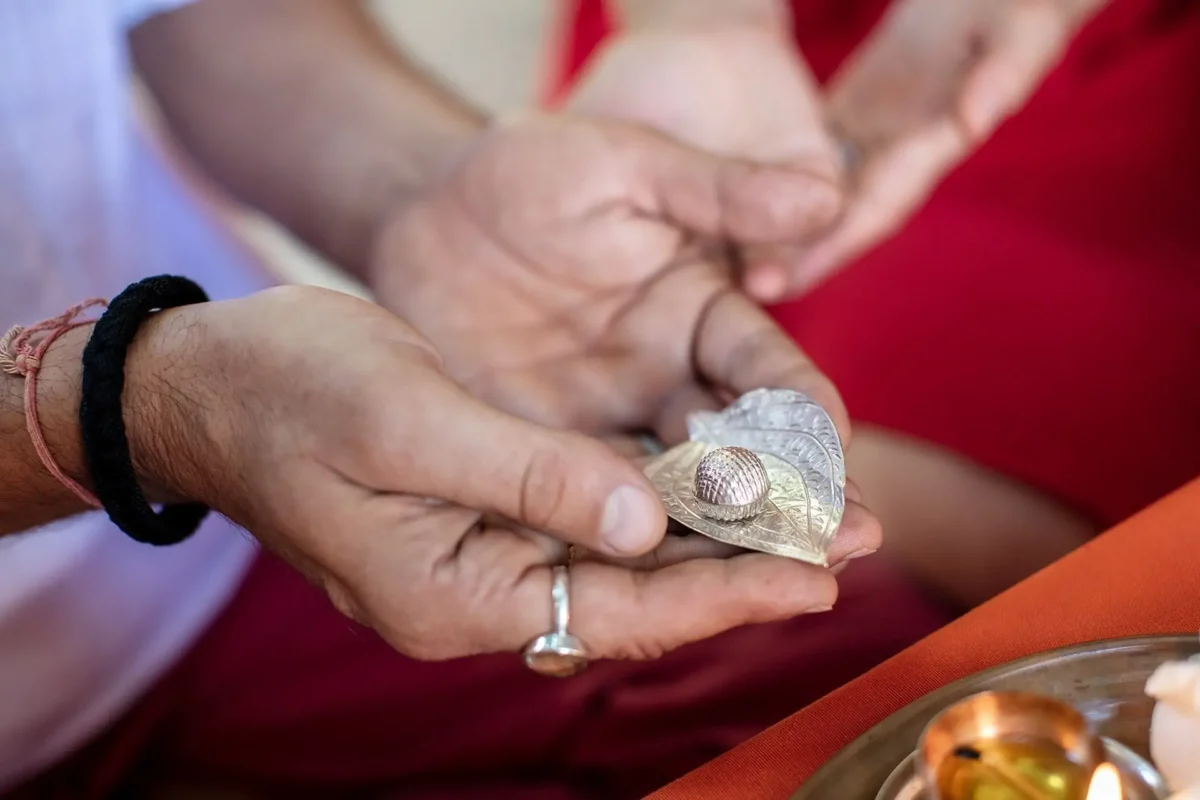Mantra diksha

Mantra diksha is a sacred initiation into mantra meditation.
The process of mantra diksha is always performed individually and live, with the ritual of Puja that belongs to a particular mantra. An integral part of the process includes touching the third eye and then whispering the mantra three times quietly into the ear. In this way, an energy transmission is made to the human nervous system and the mantra is activated.
The first diksha of the tradition is in the Guru, i.e. the root mantra Om Namah Shivaya. During this mantra diksha, Shiva Puja is performed. Along with the mantra, a rudraksha japa mala is also given – a rosary used for mantra meditation.
The Guru mantra can be used in two ways. One way is sitting meditation with japa mala, while the other refers to mentally reciting the mantra in any daily activity, which is called ajapa japa. In this way, peace of mind is maintained, one becomes more resistant to all the stresses that life brings and one lives immersed in the present moment.
During this first mantra diksha, a daily meditation consisting of 11 japa malas is given, which takes about thirty minutes. Later, the length of the meditation can be increased according to the capacity and capabilities of the person.

The second diksha is in the Mahamrityunjaya or Tryambakam mantra, which is also popularly called the mantra of immortality. During this mantra diksha, Shiva Puja is performed. This is a very intense mantra and to begin with, only one japa mala of the mantra is given per day, which takes about twenty minutes. Slowly, with regular meditation, this daily number of japa malas is increased.

The third diksha is in the mantra that corresponds to the feminine aspect of Creation (Shakti) and that resonates most with the individual. At this mantra diksha, Devi Puja is performed. This is an intense mantra and along with the Mahamrityunjaya mantra can be used every day (1 japa mala – 10 minutes) and as a focused, longer practice, during the duration of Navaratri. This specific astrological period repeats 4 times a year for 9 days and symbolizes the feminine aspect of Creation.

All mantras so far are Vedic mantras. They will awaken intuition, inner strength, abundance of energy in the body and Kundalini Shakti. They will awaken a lot of devotion and courage. They will cleanse and calm mental activity, increase focus and concentration, heal and stabilize the emotional body. The mantras will give many insights into the nature of the world we live in, will connect a person with the deepest aspirations of his soul and give him the strength to follow them.
The dynamics of initiations are completely individual. It depends on the individual’s dedication to the entire process, maturity and the amount of mental-emotional baggage that the mantras must clear.
After the meditator has gone through the process of Vedic mantras, initiation into Tantra takes place.
